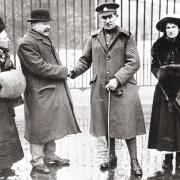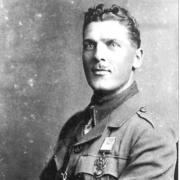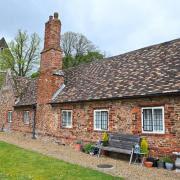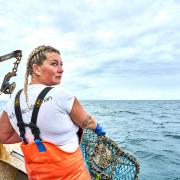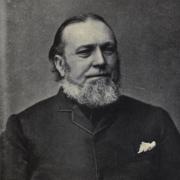Exactly 70 years ago a teenager cut a picture of a sailing ship into a piece of lino - and launched a remarkable artistic career.
HJ Jackson, known to his friends as John and now 84, is still creating detailed, evocative prints of boats and a major retrospective exhibition opens this month, in conjunction with a new book.
Working in a tiny studio in the back bedroom of his terraced house in Norwich his prints of fishing boats, beaches and aging tractors emerge from an idiosyncratic process honed over decades.

His first print helped him win a place at the Norwich School of Art. After leaving he no longer had access to a printing press but discovered that he could transfer ink from lino to paper by rubbing with the edge of a tobacco tin. Ever since he has hand-burnished his prints, meticulously rubbing each layer of colour from lino to paper. He stopped smoking 40 years ago when his daughter Hannah was born, but still has a stockpile of tins.
He never tires of the results. ‘However long you take drawing and cutting, when you print it, it’s instant,’ he said. ‘The moment you pull away the paper, you have got an instant picture. It still excites me!’
Born in a railway cottage in King’s Lynn, the meeting of water and rail coloured his creative life.

His father and grandfather worked on the railways and John moved to Melton Constable as a child. His first editioned print was of the station there, captured shortly before it closed. In Norwich he pictured the slum clearance of Victorian streets, in Great Yarmouth he pictured Scottish boats following the herrings beginning a life-long fascination with Norfolk’s fishing industry.
His prints capture places where the picturesque and poignant merge, rendering them in a striking combination of bold shapes and intricate detail.
He worked as a graphic designer for Boulton and Paul for more than 30 years and was married to Maggie, a retired primary school teacher, until her death three and a half years ago.

His prints have been exhibited across the country and featured in books and on greetings cards. There are HJ Jackson prints at the Ashmolean Museum in Oxford and he said: ‘My work tends to turn up all over the place. I think my prints are more well-travelled than I am!’
But has he a favourite? ‘It’s usually the last thing that I’ve worked on but certain prints do retain a special place in my memory. Melton Constable Station from 1958 is very important to me,’ he said. ‘One came up for sale in an auction recently and I found myself visiting it to see how it had fared in the intervening 65 years – as if it was my first child which I’d sent off into the world!
‘From more recent years, I really love the colour, composition and narrative of Waiting for the Winch from 2008, with the fisherman in the background, waiting his turn for the cable to winch his boat up the beach.

‘True to form, I am currently enamoured by my latest print On the Shingle Bank which features a large yellow caterpillar tractor from the beach at Weybourne.’
And his work continues to develop, with a current focus on almost-hidden details of fishing scenes.
‘What I have enjoyed is taking the mundane, well-worn fishing ephemera and bringing it to the fore,’ he said. ‘In linocuts like Empty Boxes, Ropes and Baskets, Quayside Relic and Marker Buoy, I’ve removed the background context so that the attention is solely on the object. It gives me the opportunity to look at things in a new light.’
See HJ Jackson: 70 years of Printmaking at Bircham Gallery, Holt, October 7 to November 1.
HJ Jackson: Drawn to Print is published by Mascot Media. It showcases his work through seven decades including drawings and paintings he made before creating his famous prints.




